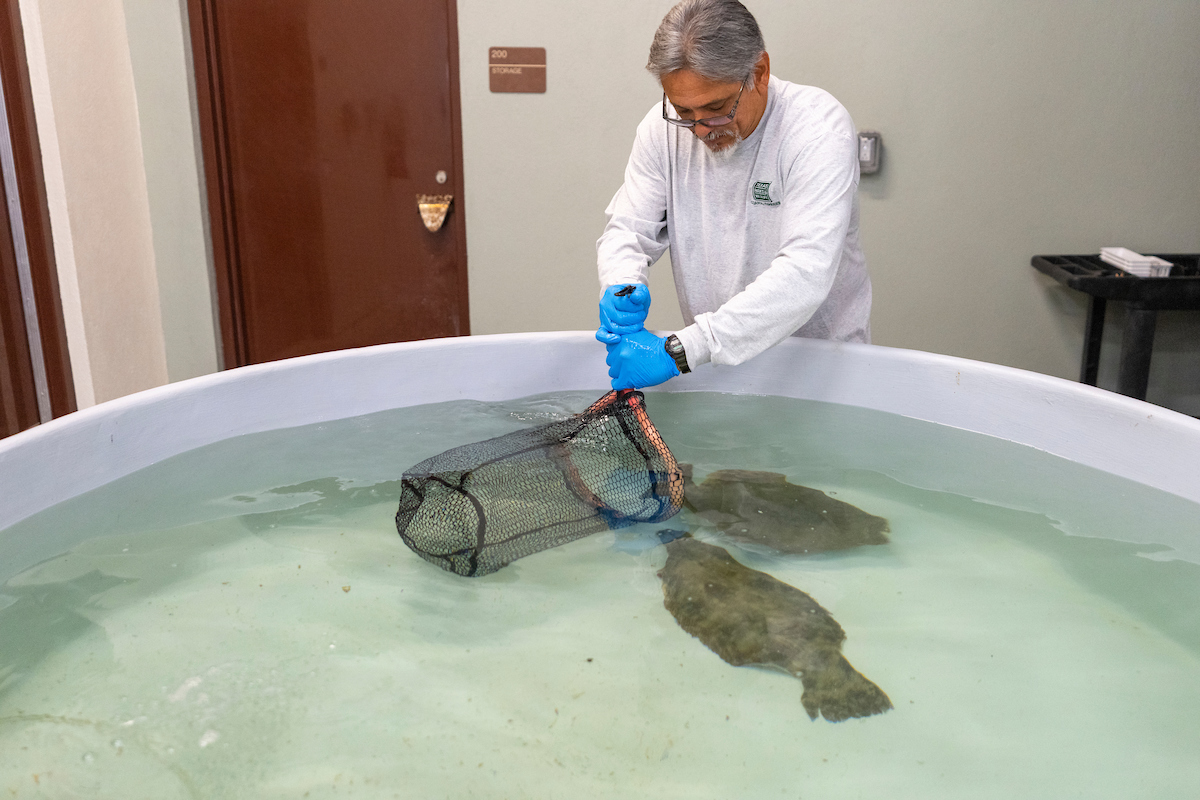$1 million grant project tackles economic, marketing gaps in U.S. aquaculture
Texas A&M AgriLife Research to co-lead National Oceanic and Atmospheric Administration grant project
Texas A&M AgriLife Research and institutions across the country will address critical economic and marketing gaps to strengthen the trajectory of the U.S. aquaculture industry with $1 million in support from the National Oceanic and Atmospheric Administration, NOAA, Sea Grant.

Compared to other regions of the world, U.S. aquaculture production volumes are quite low, said Shraddha Hegde, Ph.D., assistant professor in the College of Agriculture and Life Sciences Department of Rangeland, Wildlife and Fisheries Management and project co-principal investigator.
Despite the U.S.’s abundant natural resources and coastlines, Hegde said domestic growth in the aquaculture industry has been slow. This lack of development is due in part to the difficulties of establishing an aquaculture operation and competition from imported seafood products.
“The challenges faced by U.S. aquaculture, from regulatory complexity and stringency to rising input costs, create a complex economic reality for producers,” said Jonathan van Senten, seafood economist at the Virginia Seafood Agricultural Research and Extension Center, assistant professor in the Department of Agricultural and Applied Economics at Virginia Tech, and principal investigator for the project.
Collaboration to provide critical market insight
The collaboration draws expertise from institutions across the nation, including Texas A&M University, Virginia Tech, Mississippi State University, University of Hawaii at Hilo, University of Maryland, University of Alaska, Morgan State University, Maine Aquaculture Association, University of Guam and University of Puerto Rico at Mayagüez.
Over the next two years, the team will establish the Aquaculture Economics and Markets Collaborative, which will provide producers and stakeholders with comprehensive economic and market research. This updated information will bolster data collected from previous NOAA Sea Grant-funded initiatives to capture the latest economic contributions of U.S. aquaculture.
Hegde said tools such as retail scanner data will allow the team to capture nuances of aquaculture product prices, distribution and promotion. In turn, researchers will be able to provide stakeholders with updated business planning tools encompassing greater coverage of more aquaculture species, regions and production systems throughout the U.S., including the Pacific Islands.
“This collaborative effort will build a strong network of information sharing between different universities,” Hegde said. “That allows us to generate a much broader view of the U.S. aquaculture industry while also providing producers with key information and resources.”
In addition to market research, the project will provide producer training through workshops across the U.S. Additionally, videos and training materials will be made publicly available in both English and Spanish via an economics and marketing portal on the Sea Grant Aquaculture Information Exchange managed by Virginia Sea Grant.
Geographic range of partners reflects scope of aquaculture diversity and production
According to the 2018 U.S. Census of Aquaculture, Texas ranks 11th for aquaculture sales. The top 11 states, each with $50 million or more in sales, accounted for over $1.2 billion of the total $1.5 billion in U.S. aquaculture sales that year.
While Texas’ neighboring states of Louisiana, Alabama, Mississippi and Florida are also included in this top production ranking, Gulf Coast aquaculture is by no means homogenous. Hegde said each state represents varying levels of industry maturity with distinct markets and unique production challenges.
“For example, Mississippi has a very established industry with a heavy focus on catfish production,” Hegde said. “Texas’ industry is currently smaller, and while we produce some catfish, we also focus on a number of other species, including redfish, shrimp, hybrid striped bass, sport and bait fish, and recently some oyster growers, too.”
Even in states like Mississippi and Hawaii with well-established aquaculture industries, Hegde and grant partners agree that existing studies have not accurately reflected the economic realities and nuances of the regions.
They believe this partnership connecting researchers, industry leaders and extension services across the U.S. is a key step in addressing this issue.
“Our goal is to provide much-needed economic information and resources to advance our domestic aquaculture industry as a sustainable, profitable and high-quality food system supporting both consumers and producers,” she said.




